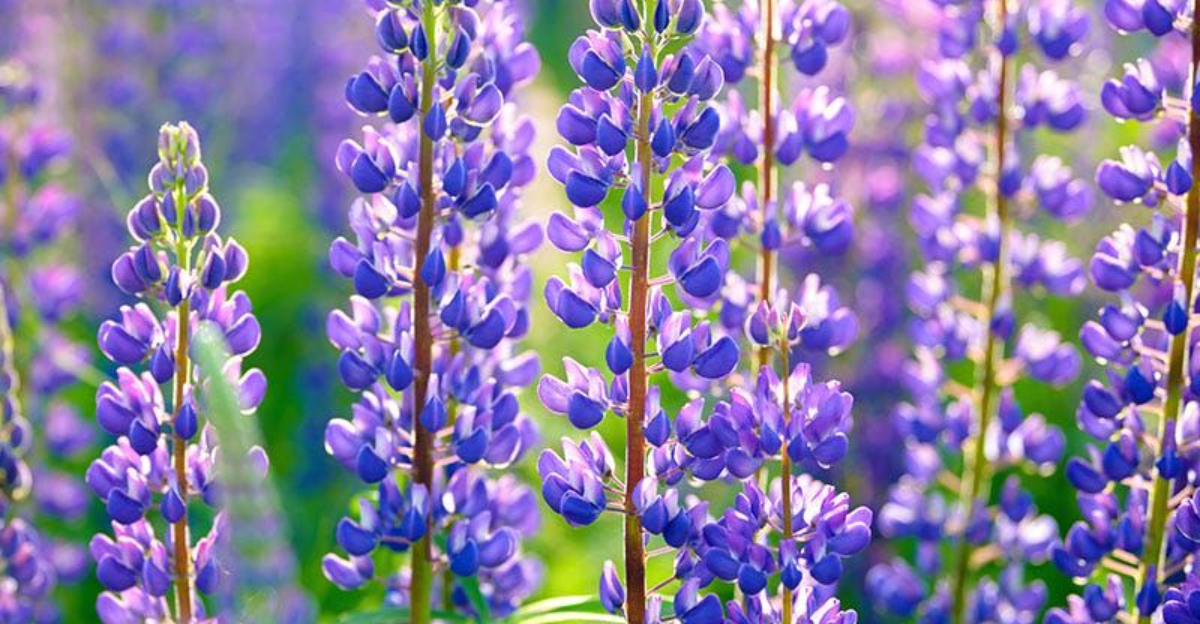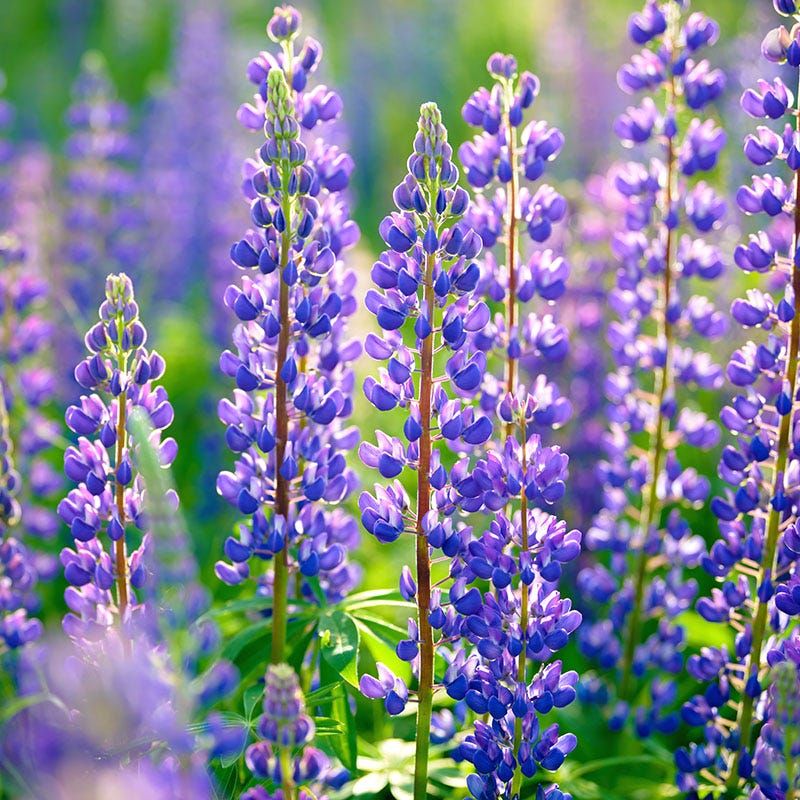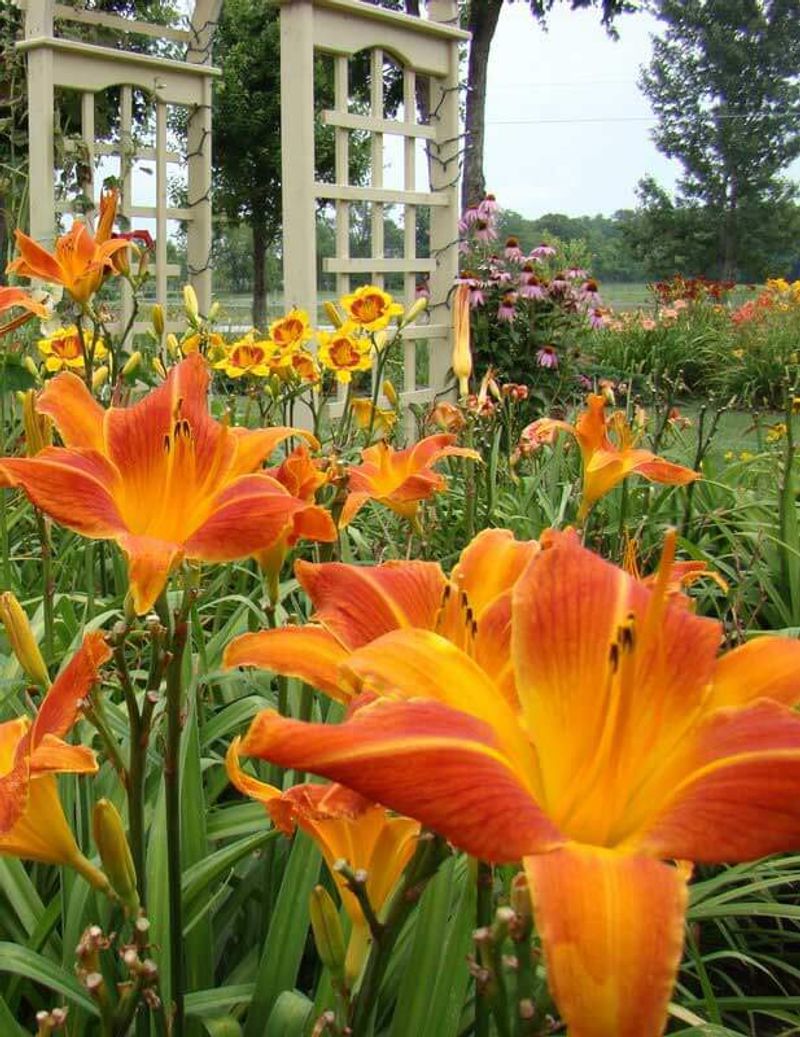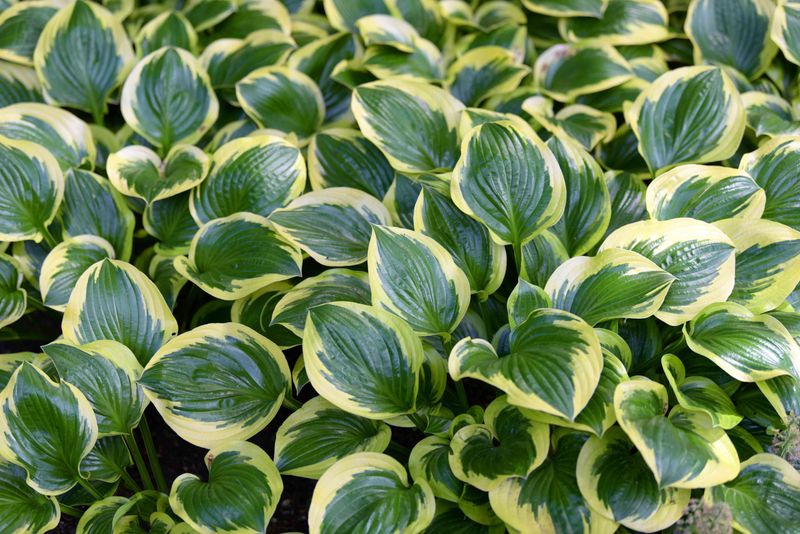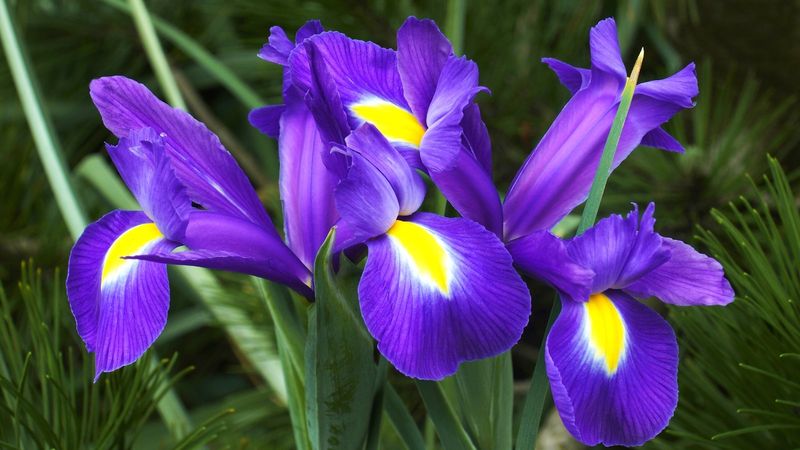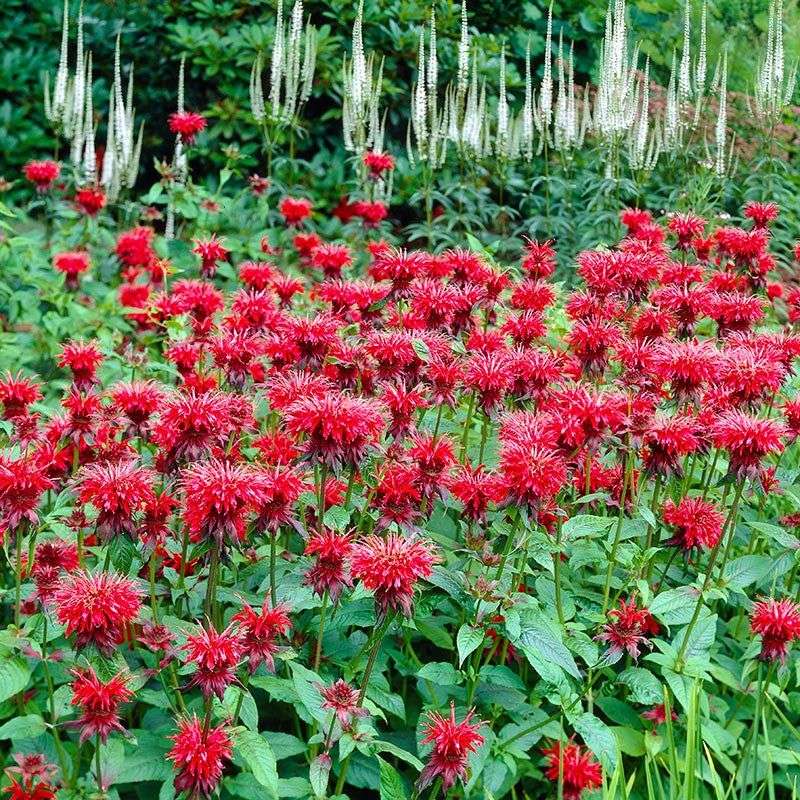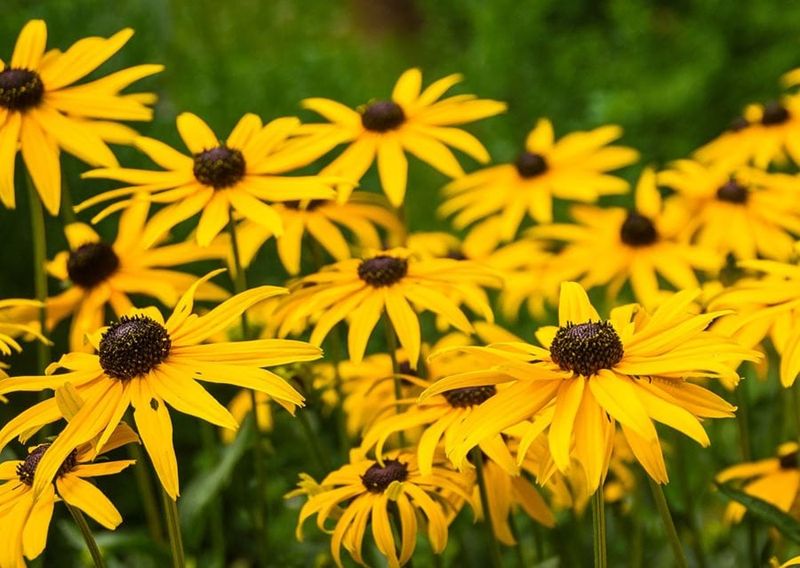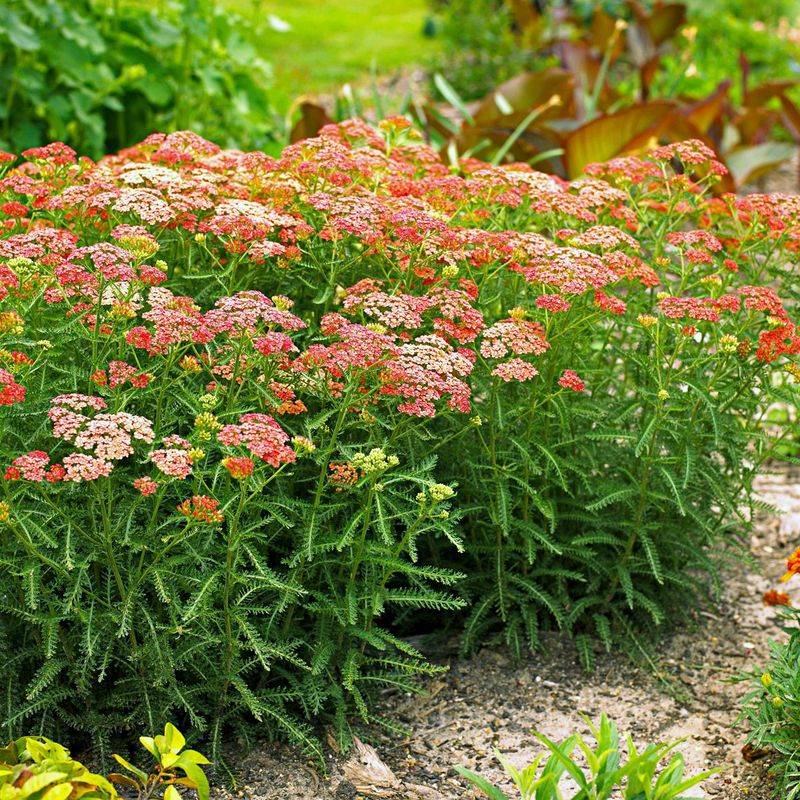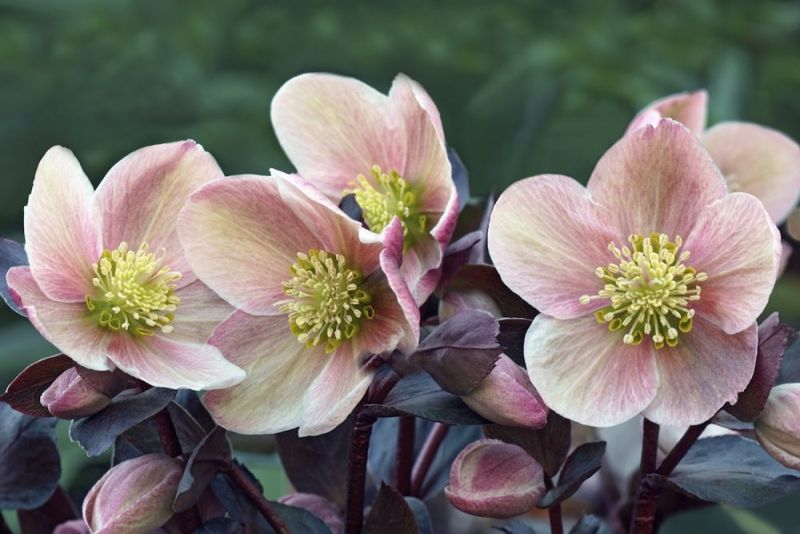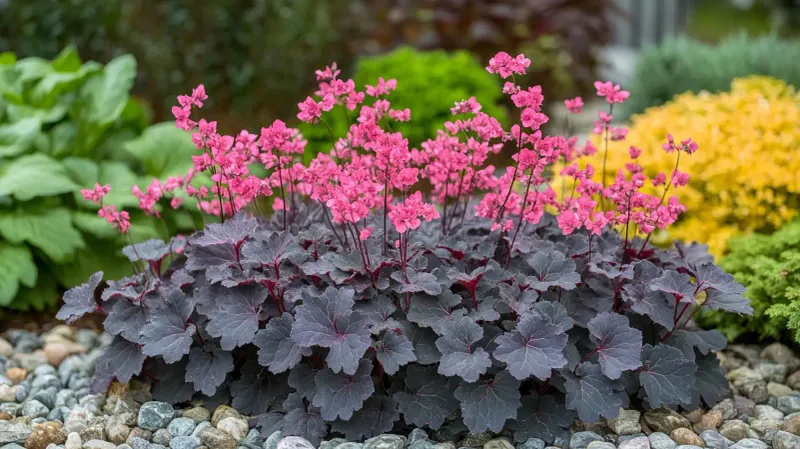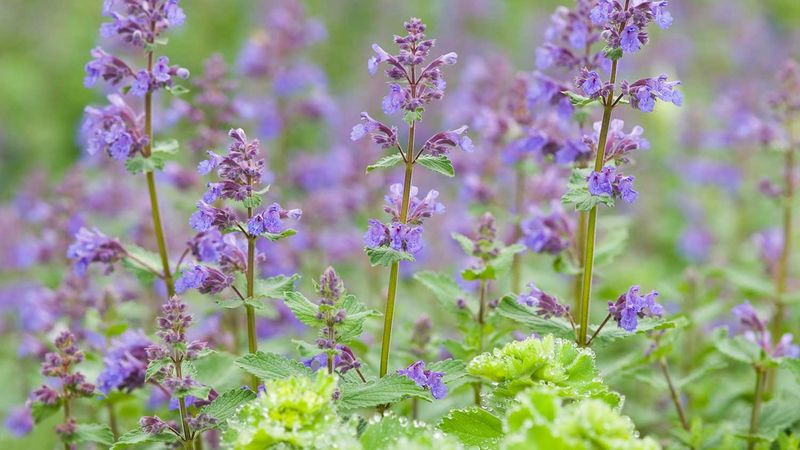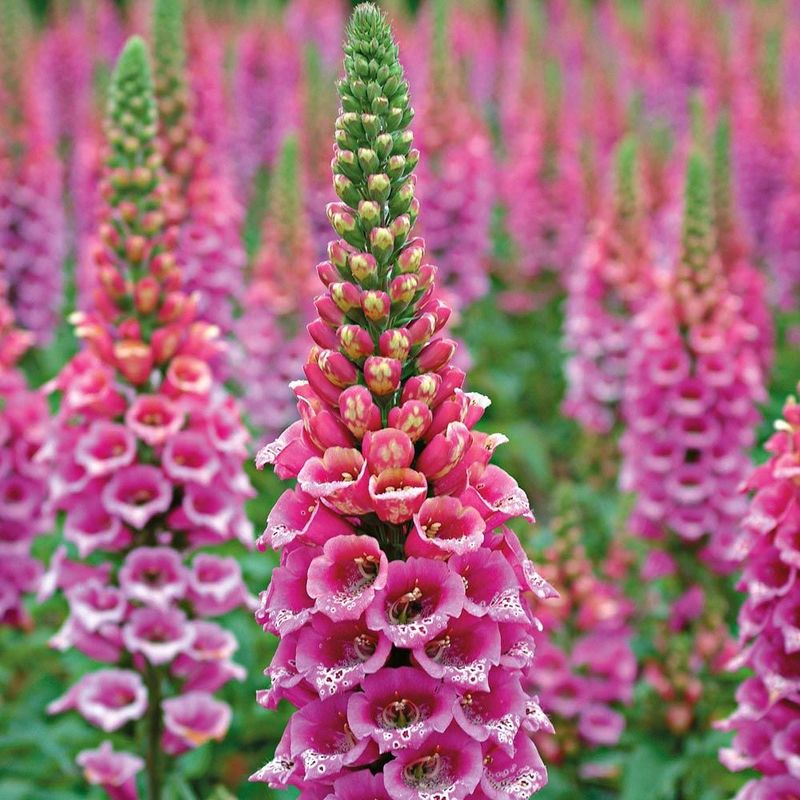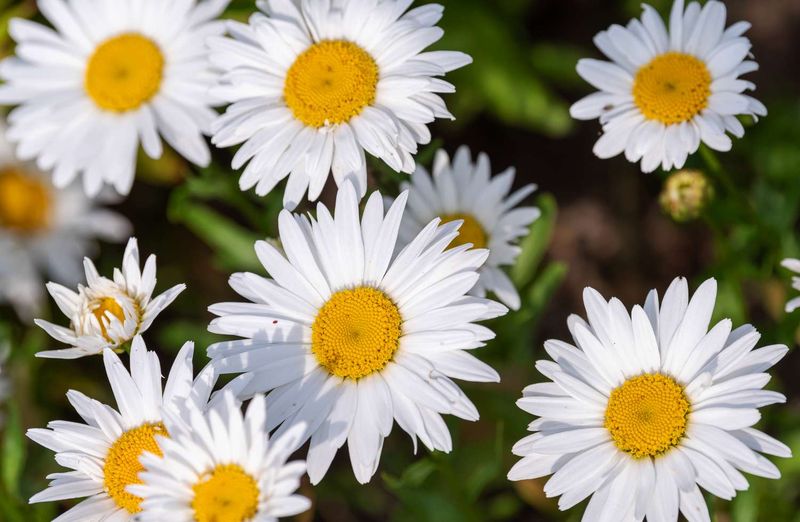Perennial flowers are nature’s resilient bloomers, returning year after year to grace gardens with their vibrant colors and mesmerizing beauty. Unlike annuals, which complete their lifecycle in a single season, perennials survive through dormancy and re-emerge to delight gardeners for many years. This makes them an excellent choice for anyone looking to cultivate a garden that requires less replanting and offers continuous charm. Whether you’re a seasoned gardener or a budding enthusiast, these 17 perennial flowers promise to bring joy and perennial elegance to your outdoor space.
1. Lupine
Lupines, with their towering spikes of vibrant flowers, bring a touch of drama to any garden. These stunning plants, often found in shades of blue and purple, thrive in well-drained soil and full sun. Their blossoms attract a variety of pollinators, making them a favorite among gardeners seeking ecological balance.
In addition to their beauty, lupines enrich the soil by fixing nitrogen, a boon for garden health. Their vertical structure adds contrast to low-lying plants, creating a dynamic visual display. With minimal care required, lupines return faithfully each spring, offering both aesthetic delight and environmental benefits.
2. Peony
Peonies are the quintessential garden showstopper, known for their large, fragrant blooms that captivate the senses. They flourish in a sunny spot with rich, well-drained soil and require little more than an annual pruning. The lush blossoms, often pink or white, make peonies a beloved addition to any floral arrangement.
Their long lifespan, sometimes spanning decades, makes them a cherished heirloom in many gardens. As spring unfolds, peonies burst forth with layers of petals, creating a romantic and timeless appeal. Every year, these reliable bloomers return to enchant with their enduring beauty.
3. Daylily
Daylilies, with their vibrant trumpet-shaped flowers, are a gardener’s delight for their robust nature and striking colors. Each bloom lasts just one day, but with numerous buds on each stem, the display continues for weeks. They are remarkably adaptable, thriving in various soil types and light conditions.
The foliage remains attractive even after the flowers fade, providing a lush, green backdrop for other plants. Daylilies multiply over time, creating dense clusters that can be divided to expand your garden. Their unwavering resilience makes them a favorite for low-maintenance perennial gardens.
4. Coneflower
Coneflowers, with their distinctive daisy-like appearance, are a staple in many perennial gardens. Known for their hardiness, they thrive in full sun and tolerate drought, making them ideal for less attentive gardeners. The bright petals, typically in shades of pink and purple, surround a cone-shaped center, attracting bees and butterflies.
Their versatility extends beyond beauty; coneflowers are also used in herbal remedies, particularly Echinacea for immune support. As summer progresses, these flowers stand tall, providing a pop of color and a natural remedy in one beautiful package. They are both functional and visually appealing.
5. Hosta
Hostas are the unsung heroes of shaded gardens, boasting lush foliage in varying shades and patterns. While they do produce delicate lavender or white flowers, their primary allure lies in their leaves’ texture and color. Hostas thrive in the shade and are incredibly low-maintenance, making them perfect for filling in garden gaps.
These perennials are a gardener’s dream for their ability to thrive in less than ideal sunlight. Hostas often serve as a living mulch, suppressing weeds with their dense growth. Their enduring appeal ensures your garden remains vibrant, even in shady spots.
6. Lavender
Lavender, with its calming fragrance and striking purple blooms, is a garden favorite that doubles as a sensory delight. This Mediterranean native thrives in sunny, well-drained conditions, and it is well-suited for borders or containers. The silvery foliage contrasts beautifully with its enchanting flowers.
Known for its aromatic oils, lavender is commonly used in sachets, oils, and culinary dishes. Its perennial nature ensures it will return each year, bringing serenity and a pop of color to any garden. Lavender’s timeless appeal lies in its versatility and ease of care, making it a perennial garden staple.
7. Iris
With their intricate patterns and vivid hues, irises are a standout in any flower bed. Named after the Greek goddess of the rainbow, their range of colors is fittingly diverse. Irises require minimal care and bloom reliably each spring. These flowers thrive in sunny locations and appreciate well-drained soil.
The sword-like foliage persists after flowering, providing structure and interest in the garden. As a symbol of hope and wisdom, irises are as rich in meaning as they are in beauty. Their elegance and resilience make them a beloved choice for gardeners seeking grace and color.
8. Bee Balm
Bee balm adds a vibrant splash of color to any garden, with its spiky blooms and aromatic foliage. This perennial is particularly attractive to pollinators, inviting a flurry of bees, butterflies, and hummingbirds. Bee balm thrives in full sun and moist, well-drained soil, offering a long blooming season that stretches through summer.
Its medicinal properties, often utilized in teas and salves, add to its charm. The flowers’ bold reds, pinks, and purples create a lively display that turns heads. Bee balm is more than just a pretty flower; it’s a beacon of vitality in any garden setting.
9. Black-eyed Susan
Black-eyed Susans, with their cheerful yellow petals and dark centers, bring sunshine to any garden. These resilient flowers thrive in a variety of conditions, making them a versatile choice for beginners and seasoned gardeners alike. They bloom from mid-summer to fall, offering extended color.
Their low-maintenance nature includes resistance to pests and diseases, enhancing their appeal. Black-eyed Susans are perfect for borders, meadows, or wildflower gardens, attracting butterflies and birds. As a symbol of encouragement and motivation, they add both beauty and meaning to your outdoor space each year.
10. Yarrow
Yarrow’s feathery foliage and clusters of tiny blooms create a soft, romantic look in any garden. Known for its drought tolerance, yarrow thrives in sunny, well-drained areas, making it a perfect choice for xeriscaping. Its long blooming period ensures a lasting splash of color.
These flowers are not just pretty; they’re functional too, often used in traditional medicine for their healing properties. Yarrow attracts a variety of beneficial insects, supporting garden biodiversity. Their ease of care and sunny disposition make yarrow a delightful addition to any perennial planting scheme.
11. Sedum
Sedum, often referred to as stonecrop, is a hardy perennial that thrives in poor soil conditions, making it perfect for rock gardens. Its succulent-like leaves and star-shaped flowers add texture and color. Sedum is available in various hues, from deep reds to soft pinks.
With its drought-resistant nature, sedum requires minimal watering and maintenance. Its blooms attract pollinators, and its foliage remains attractive year-round, providing interest even in off-seasons. Ideal for sunny spots, sedum is a resilient choice for gardeners looking to establish a low-maintenance, visually appealing landscape.
12. Bleeding Heart
Bleeding heart flowers captivate with their unique heart-shaped blooms that dangle delicately from arching stems. These shade-loving perennials thrive in cool, moist environments, bringing a touch of elegance to woodland gardens. Their striking pink or white flowers bloom in spring, offering an enchanting display.
The foliage is fern-like and adds a lush, green texture to garden beds. Bleeding hearts, with their nostalgic charm, often evoke memories of grandmother’s garden. They are a testament to the enduring appeal of classic beauty, returning faithfully each year to charm their way into our hearts.
13. Hellebore
Hellebores, sometimes called Lenten roses, bloom when most flowers are dormant, offering a splash of color in late winter or early spring. These perennials thrive in shady spots with rich, well-drained soil. Their leathery, evergreen leaves add year-round interest to garden areas.
The blooms range from white to pink to deep purple, often with intricate markings. Hellebores are deer-resistant and long-lasting, making them ideal for low-maintenance gardens. Their ability to brighten the garden during the bleak months makes hellebores a cherished addition for gardeners seeking year-round beauty.
14. Coral Bells
Coral bells, known for their striking foliage, offer a kaleidoscope of colors ranging from deep purples to vibrant greens. They thrive in partial shade and well-drained soil, making them versatile in various garden settings. While the foliage is the primary attraction, their delicate bell-shaped flowers add a soft touch.
These perennials are perfect for borders, rock gardens, or containers, providing year-round interest. Coral bells are resilient, low-maintenance, and deer-resistant, ensuring longevity in your garden. Their unique blend of foliage and flower appeal makes coral bells a standout choice for gardeners seeking variety.
15. Catmint
Catmint, with its soft, fragrant foliage and spikes of lavender-blue flowers, is a favorite among pollinators and gardeners alike. This hardy perennial thrives in sunny spots with well-drained soil, offering a long blooming season from late spring into summer.
Its aromatic leaves are soothing, often used in teas and sachets. Catmint is drought-tolerant and easy to grow, making it an excellent choice for beginners. The plant’s sprawling habit creates a lush, informal look, perfect for cottage gardens or borders. Catmint’s charm lies in its ease and beauty, promising an inviting garden presence.
16. Foxglove
Foxgloves are the epitome of elegance, with their towering spikes of tubular flowers that stand out in any garden. These biennials behave like perennials when allowed to self-seed, providing a continuous display of blooms. Foxgloves thrive in partial shade and well-drained soil.
Their flowers are not only beautiful but also attract hummingbirds, adding a lively element to the garden. Though charming, foxgloves are toxic if ingested, so care should be taken in gardens accessible to pets and children. Their enchanting presence and allure make foxgloves a timeless garden favorite.
17. Shasta Daisy
Shasta daisies are the embodiment of classic charm, with their crisp white petals and sunny yellow centers. These perennial favorites thrive in full sun and well-drained soil, blooming profusely throughout the summer. Their sturdy stems make them excellent for cutting and arranging.
Daisies are known for their low-maintenance nature, resisting pests and diseases with ease. They multiply quickly, offering more blooms each year. Shasta daisies’ cheerful disposition and reliability make them a beloved choice for gardeners looking to add a burst of happiness to their outdoor spaces.
